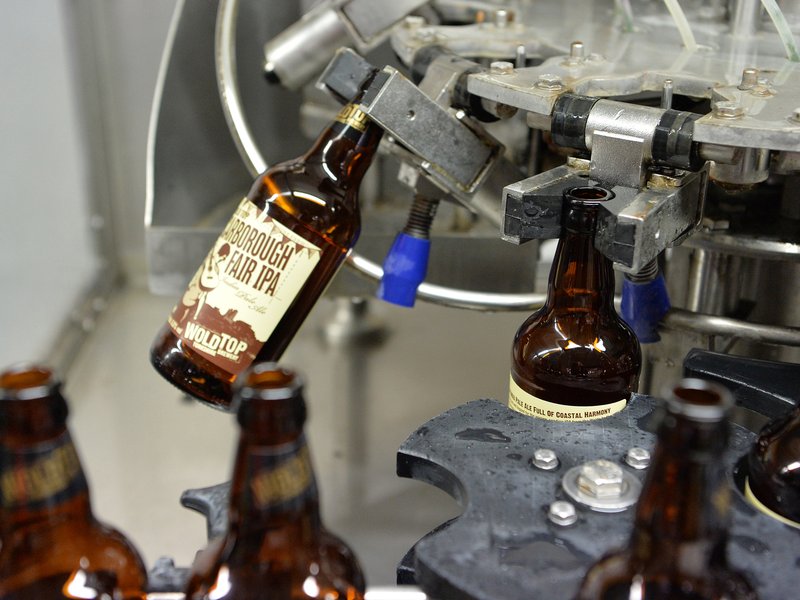
Have you ever wondered why beer is sold in brown bottles?
Posted by Wold Top Brewery on
Our directors, Kate and Alex take a look at beer packaging in this month's newsletter. It's an interesting read, so we thought that we would share it on the website. If you'd like to receive our monthly round up of news and events from the brewery, you can sign up here.
Meanwhile, onto packaging..
As you may well be aware, there are lots of opinions on how beer is packaged flying around at the moment, so we thought we’d discuss our thinking on this subject with you this month.
Why do Wold Top use Brown bottles?
When beer first started appearing in bottles in the 19th Century the initial bottles were always clear, to show off the internal product and (because Trading Standards weren’t as rigorous as they are now) to prove that they actually contained beer!
Whilst this was fine during the low and cold temperatures of the autumn and winter months, as soon as these bottles became exposed to any heat and direct sunlight, the beer within them started to deteriorate and become sour. This gave rise to the term ‘skunky’ when referring to the slight sour taste and smell given off by the beer.
A solution to this was to use ‘coloured’ glass instead as it offered more UV protection for the beer inside the bottle. At first, green glass was used, but then, because of shortages in green glass post WW2, most Brewers switched to using brown glass and have continued to do so.
What is a ‘cask beer’?
Cask beer undergoes secondary fermentation in the barrel. It’s not filtered or pasteurised. Fresh live beer is piped straight into the cask where, still in unfinished form and containing lots of lovely fruity residual yeast, it then continues to mature, with the yeast that is still remaining in the cask nibbling away at the sugars, turning them into alcohol and creating soft carbonation. It also rounds off rough flavour edges and brings greater depth of flavour. All this tends to happen in the pub cellar and the quality of your pint depends hugely on how well the pub looks after it (we will talk more about this in next month’s piece!).
This is the most traditional way of serving beer and something that we feel Wold Top does really well!
What is a ‘kegged beer’?
Keg beer is beer that has been filtered and in some cases pasteurised (although Wold Top beers never have been) then artificially carbonated (had bubbles added) and put into a ‘keg’ which is a pressurised container. This is then dispensed, using gas, and comes out more ‘fizzy’ than cask beer. It’s traditionally been the domain of European Lagers and Pils but has, over the last few years here in the UK become a much more acceptable way to drink more ‘independent and small scale’ beers. Research suggests kegging suits more ‘hoppy’ beers as it helps neutralise the hop tang before drinking the next mouthful. It enables the beer to have a longer shelf life as the ‘live yeast’ element from a cask beer is removed and gives customers without much cellar space the option to try Wold Top beers - which we love!
Cans - what’s the hype?
To clarify - the beer within a can is no different to the beer inside a bottle. It’s been treated in the same way. The only difference is the outer casing.
Cans have emerged recently as the more ‘environmentally friendly and consumer friendly’ option for home drinking. They are lighter than glass, more recyclable and cheaper to manufacture. They are also more user friendly when out and about - picnics, walks, parties etc.
In terms of beer quality - some believe that cans give a ‘fresher’ taste, whilst others think they impart a ‘metallic’ tang to the flavour. There’s no definitive difference.
Here at Wold Top we are constantly looking at all options for our beer and if we feel the time is right for cans then we won’t ever say no - so watch this space!
Share this post
- Tags: News
